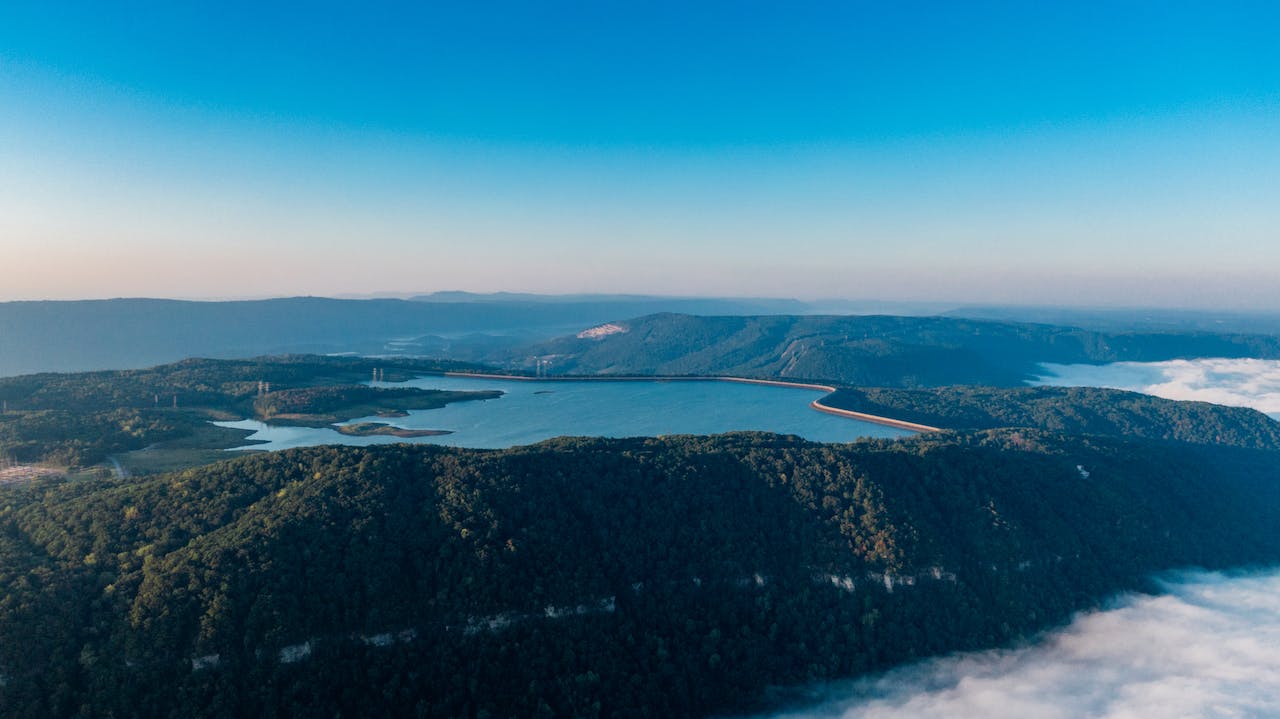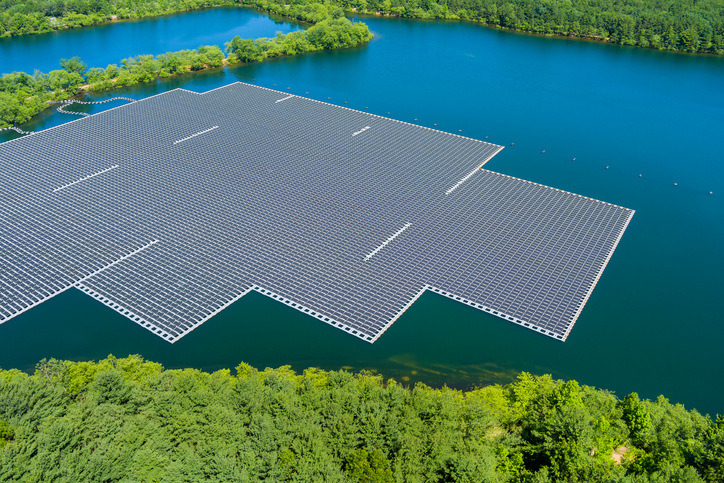
7 of the most innovative hydropower renewable energy companies
20 Nov, 20236:56Hydropower renewable energy companies play a crucial role in the energy transition and effor...

Hydropower renewable energy companies play a crucial role in the energy transition and efforts to reduce CO2 emissions. Utilising one of the oldest energy sources, the hydropower energy they create generates the highest electricity yield of all renewables. For context, modern hydropower energy turbines have the potential to convert as much as 90% of the available energy into electricity.
Farmers as far back as ancient Greece used hydropower energy to grind grain. Nowadays, it's a reliable, versatile, and low-cost source of clean electricity. Beyond electricity generation, hydropower energy provides flood control, irrigation support, and clean drinking water.
But with all these positives, who are the most innovative hydropower renewable energy companies driving this progression within the renewables space?
In this guide, we will outline the below most innovative hydropower renewable energy companies:
- BC Hydro
- Agder Energi
- Centrais Eletricas Brasileiras
- China Yangtze Power
- Duke Energy
- RusHydro
- Statkraft
1. BC Hydro
Our first of the seven hydropower renewable energy companies to highlight is the British Columbia Hydro and Power Authority, which operates under the name BC Hydro. The BC Hydro is a Canadian electric utility company based in British Columbia. As the leading electricity distributor in the region, they deliver electricity to 95% of the population in British Columbia and serve more than 4 million people. Its nameplate capacity is about 11,000 MW.
They're a Crown corporation, meaning they report to the BC Ministry, Mines and Low Carbon Innovation, whilst being regulated by the British Columbia Utilities Commission (BCUC). BC Hydro is mandated to generate, sell, purchase, and distribute electricity.
BC Hydro operate 11 hydroelectric power stations in the British Columbia region alone, with a total capacity of 6,882 MW. This represents 58% of BC Hydro's generating capacity. In total, they operate 32 hydroelectric stations, which generate between 43,000 and 54,000 gigawatt hours (GWh) of electricity annually, depending on water levels.
Additionally, they own a few large-scale stations along the Peace and Columbia. Their electricity is delivered through a network of over 55,000 km of distribution lines and over 18,000 km of transmission lines.
2. Agder Energi
Next on our list of hydropower renewable energy companies is Agder Energi, a Norwegian energy company founded in 2001. Agder Energi is the third-largest hydroelectric production company in Norway. They’re involved in hydroelectric power generation and electricity trading, distribution, and services for both consumer and business markets.
They operate throughout Norway, Scandinavia, and other parts of Europe. They focus on developing hydropower, which is the main source of renewable energy in Norway, whilst investing in new trading solutions for the decentralised European energy market.
As of 2018, they owned or partially owned 49 hydropower plants in Norway, generating about 8.1 TWh per year and providing nearly 200,000 customers with green energy.
3. Centrais Eletricas Brasileiras
Another one of the most innovative hydropower renewable energy companies to outline is Centrais Eletricas Brasileiras, also known as Eletrobras. Centrais Eletricas Brasileiras is Latin America's largest power utility company and the tenth largest in the world. It's also the fourth-largest clean energy company in the world. They operate 48 hydroelectric power plants throughout Brazil and have a total capacity of 118,106.20 GWh.
Eletrobras has an electricity generating capacity equivalent to about a third of the country's total installed capacity, whilst more than 90% of their installed capacity comes from sources with low greenhouse gas emissions, mainly hydropower.
The major hydropower projects they operate are the 1.82GW Teles Pires hydropower project in Mato Grosso, the 2.12GW Itumbiara hydropower project in Goias, and the 8.3GW Tucurui plant (which generates power through 25 turbines) in Para.
Their largest to date is the Belo Monte Hydropower Project, worth $11.2 billion, and was fully commissioned in November 2019. It's the second-biggest hydroelectric plant in Brazil after the Itaipu dam and the fourth-biggest power plant in the world, with an 11.2GW capacity. This is enough to provide electricity to 60 million people, accounting for about 10% of the country's total electricity demand.
4. China Yangtze Power
China Yangtze Power, founded in 2002, is a Chinese utility company based in Beijing. They currently operate one of the largest hydropower plants in the world, the Three Gorges Dam Hydroelectric Power Plant, located on the Yangtze River, which generates 22,500 GW of electricity and has 34 turbines.
As of July 2019, the company had 82 hydropower generating units, of which 58 have a capacity of 700MW or more. Recent projects for China Yangtze Power involved the 16GW Baihetan Hydropower project and the 10.2GW Wudongde hydropower project, both along the Jinsha River.
Once completed, the Baihetan hydropower plant will be the second largest in the world after the Three Gorges Dam. It'll also be one of the first projects to use a 1,000MW hydro-turbine generator. Construction on the project started in August 2017, and the first turbine unit was installed in January 2019. The facility is predicted to generate 60 kWh of electricity whilst offsetting 52 million tonnes (Mt) of CO2 emissions annually.
5. Duke Energy
Duke Energy is another one of the hydropower renewable energy companies worth mentioning. They’re predominantly an electric power and natural gas company headquartered in Charlotte, North Carolina and one of the largest electric power holding companies in the United States.
The company provides electricity to 7.8 million customers in six states and has approximately 51,000 MW of electric generating capacity in the Carolinas, the Midwest and Florida. They're also the second largest investor-owned hydroelectric operator in the US.
They have 11 generating units at six plant sites generating more than 56% of electricity for Duke Energy's customers in the Carolinas. Their portfolio includes 31 hydroelectric power stations ranging from 4 MW to 350 MW.
Hydropower companies like Duke Energy require top talent to support the organisation's day-to-day operations. With the talent shortage and skills gap within the renewable space, there's a considerable demand for reskilling professionals within the industry to ensure companies stay ahead of the curve and reach the 2050 net-zero targets. We explored this topic in our guide: Reskilling Talent for Hydrogen Renewable Energy Jobs.
6. RusHydro
RusHydro is a Russian hydropower company and the second-largest hydropower producer in the world, with a total production capacity of 98,432 GWh from its hydropower and pumped storage plants in 2018. With an installed capacity for its hydroelectric plants of 38.9 GW, RusHydro is one of Russia's largest power-generating companies.
In a 50-50 joint venture with UC RUSAL, RusHydro operates Russia's 3GW Boguchanskaya hydropower plant (HPP). The other major power plants owned by RusHydro include the 1,330MW Zeiskaya HPP (claimed to be the first large-scale hydropower plant in the Russian Far East), the 2,010MW Bureiskaya HPP, the 475MW Novosibirsk HPP, and tens of HPPs in the North Caucasus. It also owns the 561MW Sevan-Razdan Cascade hydropower plant in Armenia.
The company owns and operates over 70 hydroelectric facilities in Armenia and Russia, including the most prominent Russian hydropower plant, Sayano-Shushenskaya in Siberia. The Russian Federation owns 60.56% of RusHydro's share capital.
7. Statkraft
Statkraft is a hydropower company fully owned by the Norwegian state. They're one of Europe's largest renewable energy producer, and most of their renewable energy capacity comes from hydropower. They currently have 346 hydropower plants responsible for a total of 55.7 TWh of hydropower production and 14,402 MW of installed capacity.
Near 50% of the reservoir capacity in Europe is in Norway, of which Statkraft own about half. They also have hydropower assets in Norway, Sweden, Germany, the UK, Albania, Turkey, Brazil, Peru, Chile, Nepal and India.
They also develop and generate wind power, gas power, district heating, and solar power.
Final thoughts on these 7 hydropower renewable energy companies
The world of hydropower has seen remarkable innovation and progress thanks to the efforts of pioneering companies outlined in this guide. From the BC Hydro, Agder Energi, and Centrais Eletricas Brasileiras to China Yangtze Power, Duke Energy, RusHydro, and Statkraft have all played pivotal roles in advancing the hydropower sector.
These hydropower renewable energy companies have demonstrated a commitment to harnessing the potential of hydropower, not just as a source of clean electricity but also as a means of sustainable water management and environmental responsibility. Their dedication to innovation and sustainable practices has allowed hydropower to thrive in the modern energy landscape.
From Canada to Norway, Brazil to China, the United States to Russia, and throughout Europe, these companies have shown that hydropower can be an efficient, reliable and environmentally friendly energy source on a global scale. They have leveraged cutting-edge technologies, invested in large-scale projects, and fostered collaborations to bring about significant advancements in the field.
As we look to a future where clean and renewable energy sources are essential to combat climate change and reduce carbon emissions, the contributions of these hydropower companies cannot be overstated. Their work powers homes and industries and contributes to flood control, irrigation, and the provision of clean drinking water, addressing a range of critical societal needs.
In the ongoing journey toward a sustainable energy future, these innovative hydropower companies serve as inspiring examples of how ancient technology can be harnessed and continuously improved to meet the challenges of the modern world. Their dedication to clean energy and responsible water management will undoubtedly continue to drive progress in the hydropower sector and contribute to a greener, more sustainable planet.
We touched on the renewable energy talent shortage earlier in this piece. You can discover more on this subject by reading our guide: Exploring the Growing Demand for Hydrogen Renewable Energy Talent.
Looking for expertise in hydrogen recruitment?
As the largest engineering staffing firm in the world, our hydrogen recruitment services are best placed to connect top talent with the fastest-growing and most innovative hydropower renewable energy companies worldwide. We have a presence in 45 countries and over 80 offices, meaning we can find a solution best suited to your needs regardless of where you are in the world.
Whether you're seeking a recruitment partner to help support your hydropower energy projects or are a passionate individual searching for the latest hydrogen jobs, contact NES Fircroft today.









